
8 minute read
LET THERE BE LIGHT
It bounces off raindrops to give us rainbows and travels at a speed equal to 7.5 circuits of the globe per second; you can photograph and paint it but never hold it in your hand; shadows only live where it exists but die in its direct glare. Light is a riddle of physics artists have been solving since man learned to use tools and even if your knowledge of prismatic refraction stops at the album cover of Pink Floyd’s Dark Side of the Moon, its uplifting qualities are essential in these dark times. Belinda Beckett finds out how artists got to grips with it.
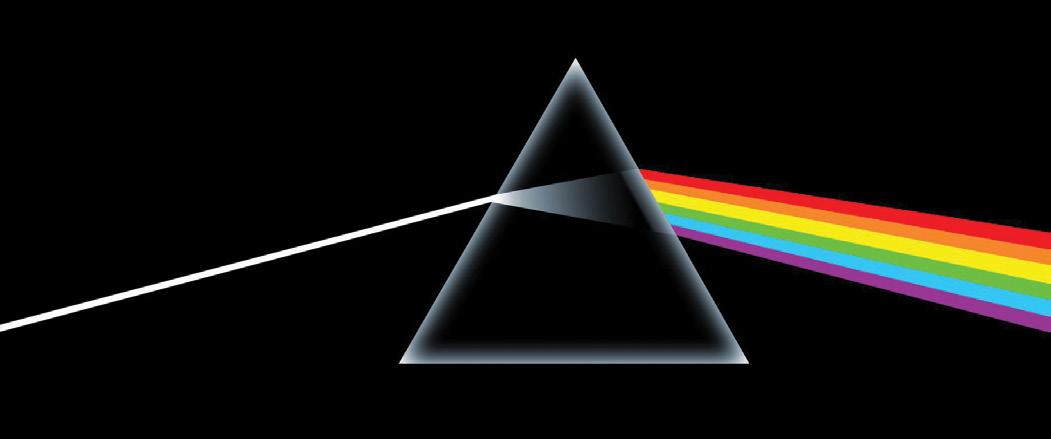
Pink Floyd’s Dark Side of the Moon album demonstrates the concept of light refraction
LIGHT IN THE DARK AGES
In the beginning, artists played with fire, gold and glass.
CAVE CARTOONS
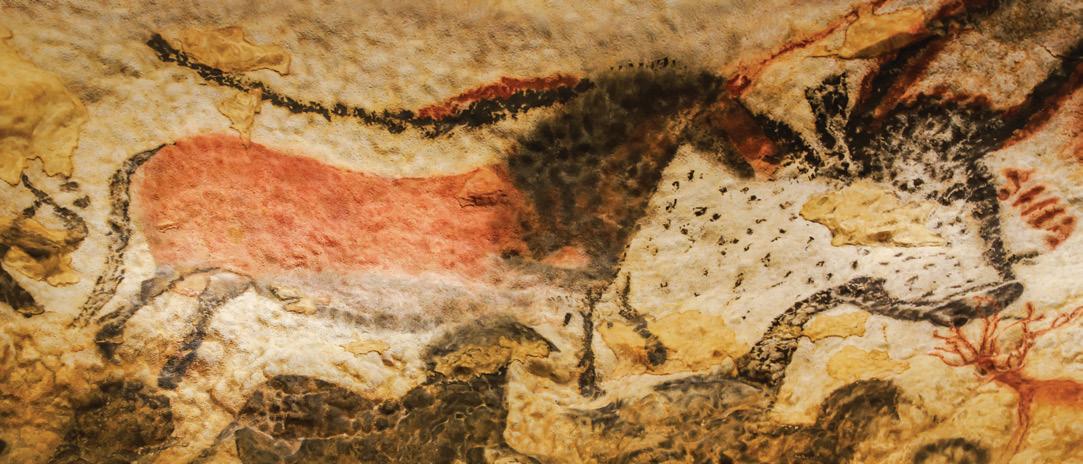
In firelight, stags heads in Lascaux Cave, France, become a single stag in motion
Prehistoric rock artists didn’t only need firelight to see what they were doing. Clay fire pots (early oil lamps) unearthed this century reinforce the theory that our ancestors used strategic lighting to animate their bison and deer. Flames flickering over multiple images of animals had a strobing effect, creating the illusion of one single animal running, the way cartoons are made. The original Flintstones home movies!
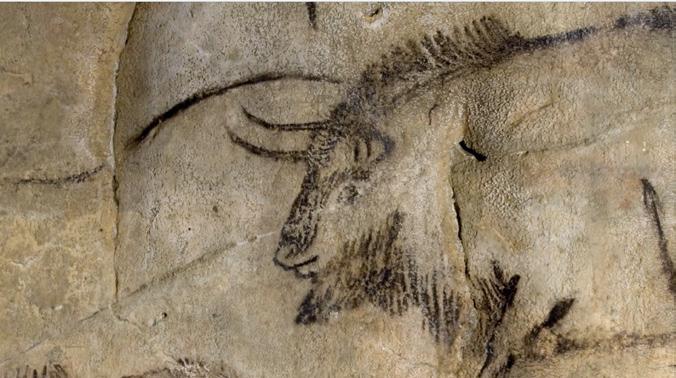
DIVINE LIGHT
Gold has symbolised divinity since the ancient Egyptians spotted gold nuggets twinkling under the waters of the Nile. As brilliant as the sun they worshipped, as eternal as the reincarnation they hoped to attain, the Pharaohs paid homage to their Gods with golden idols and made sure they were buried with plenty of carats to pay their passage into the next life. Tutankhamen’s gold and lapis lazuli funeral mask weighs 10 kilos. Styled on the underworld god Osiris but with the facial features of the young King, its detail proves the mettle of artists of the time. Art continued to be created for the glory of God throughout the Dark Ages. Christian monks captured saintly light in their illuminated manuscripts with gold leaf which shimmered as the pages were turned, and artists festooned their frescoes with golden halos.
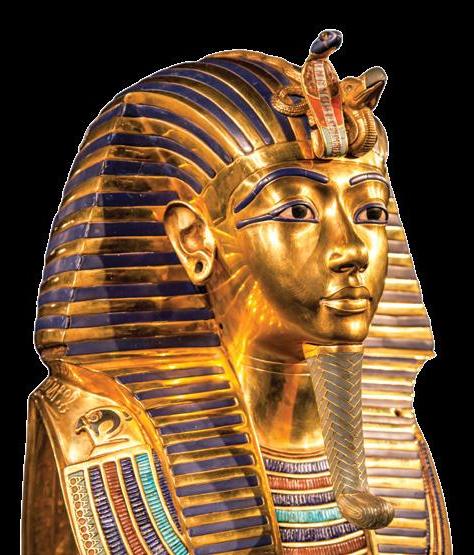
King Tut’s burial mask cast in gold and lapis lazuli, symbolising divinity
HEAVENLY WINDOWS
Stained glass church windows were the period’s big pictorial art form. Royal patrons lavished their crown wealth on them in the hope of buying favour in this world and avoiding hellfire in the next.
Sainte-Chapelle in Paris, the royal chapel where the medieval kings of France bent the knee, is a 13th century tour de force: 15 towering arched windows depicting 1,130 biblical figures, crowned by a rose window with 87 petals.
It’s not a lost art either. The stunning blue windows at Dom Bosco Sanctuary in Brasilia, made from 7,400 pieces of Murano glass, have symbolised Jesus as the ‘light of the world’ since 1960.
THE DARK ARTS
‘A painter should begin every canvas with a wash of black, because all things in nature are dark except where exposed by the light,’ wrote Leonardo da Vinci. His study of optics shone new light on the flat paintings of medieval times and art began to stand out in 3D realism as artists discovered light and shade.
Chiaroscuro (Italian for light and dark) took bold contrast to the extreme and Caravaggio was its champion. He pierced his sombre backgrounds with a laser of light that seems to sever his subjects in two: half illuminated, half in the shadows. It’s a fitting metaphor for this brilliant but dark young artist who got away with murder before he died at 38. On the contrary, his work will arrest you!
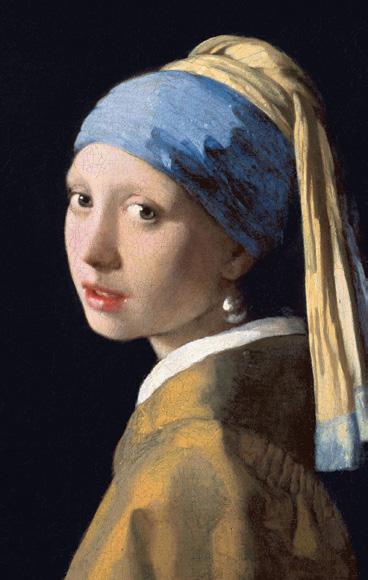
Girl with a Pearl Earring has inspired poems, novels and movies
ENLIGHTENED TIMES
Artists saw the light from a new perspective and discovered how to paint in 3D
THE WINDOW PAINTER
For Vermeer, light wasn’t only technique – it was the subject of his paintings. And he was fixated with windows. The softer light they cast was something new for artists as glazing was only just becoming affordable for ordinary households. Vermeer rose to the challenge, infusing his paintings with a pearly iridescence that became his signature style. The 17th century Dutch artist was OCD about colour tone and used expensive paints. His favourite ultramarine from powdered lapis lazuli was costlier than gold.
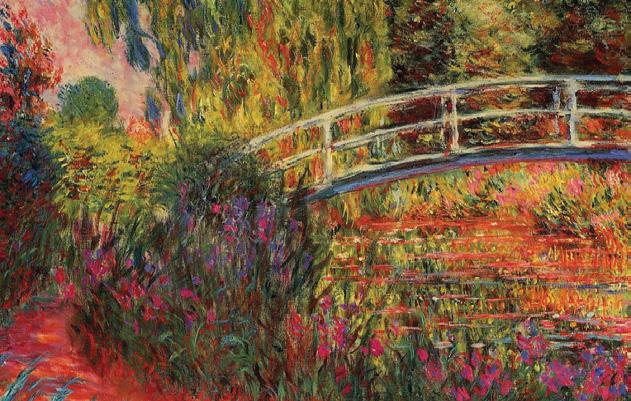
Monet’s Japanese Bridge
Poisonous lead white pigment was key to painting light until the 19th century. In medieval times it was prepared by suspending strips of lead above vinegar or urine in a sealed jar and burying it in a dung heap until a white rust formed which was ground into pigment. Today it’s a banned toxic substance.
BROAD DAYLIGHT
Art came out of the studio big style in the mid-19th century. Painting En Plein Air cast new light on the capricious colours of nature and the Impressionists went to town with their palettes in the countryside. Monet found inspiration in the changing colours of the Japanese water garden at his home outside Paris – “my true masterpiece” – versions of Water Lilies at different times of day. “There are moments when I’m appalled at the colours I’m having to use,” he said. “The light is simply terrifying.” As his later work shows, after a cataract operation he was able to see ultra violet like insects, which may have been truly terrifying!
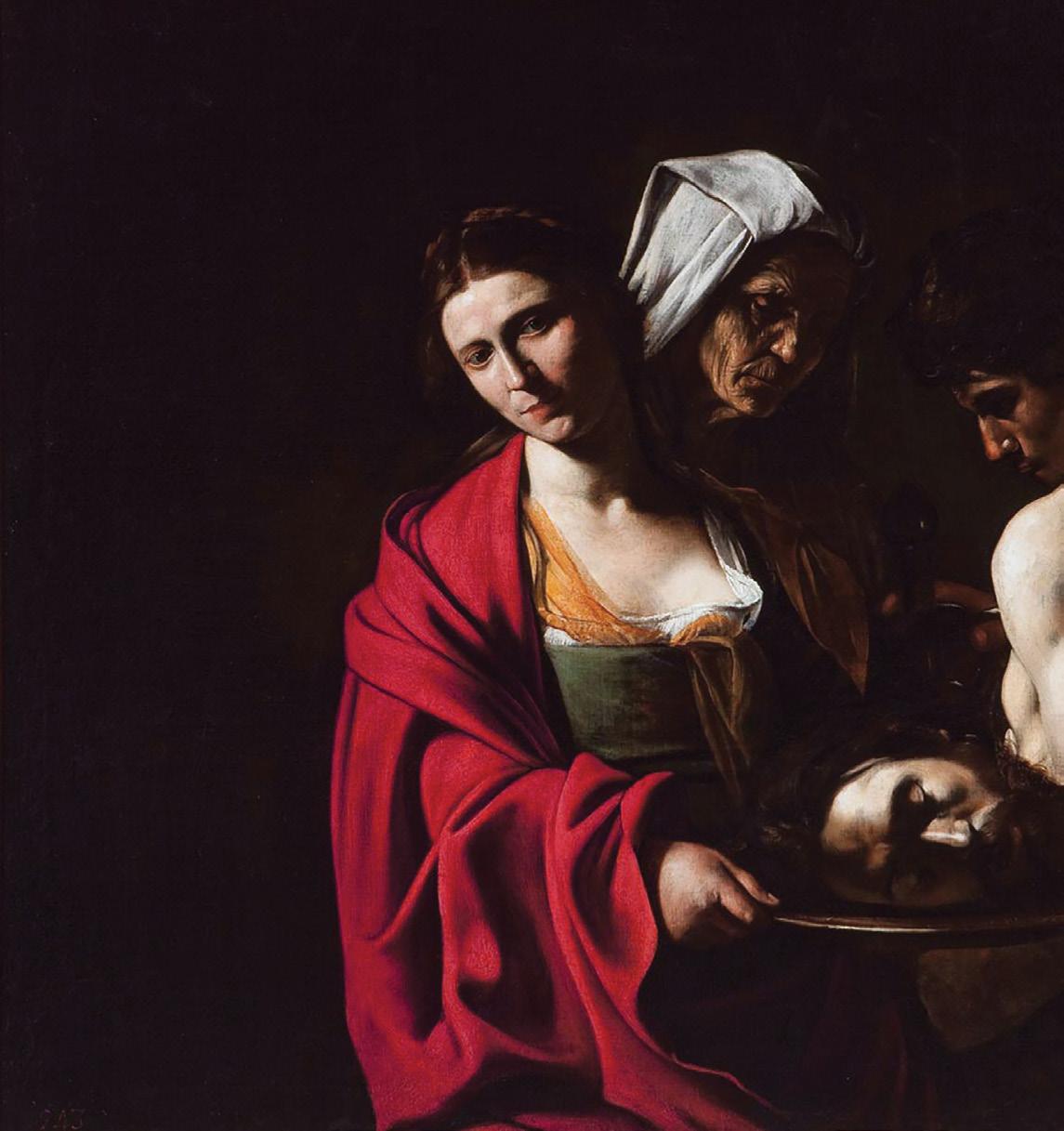
Caravaggio’s Salome with the Head of John the Baptist hangs in the Royal Palace of Madrid
ELECTRIC LIGHT ART
After Edison’s light bulb moment in the late 19th century, light itself became the canvas, the paintbrush and the palette.
ILLUMINATING INSTALLATIONS
Light as a tool for artistic expression began to dazzle us after a group of spaced out California hippies formed the Light and Space art movement in the 1960s. James Turrell, one of its leading lights, generates, channels and colours it and plays with its geometry in architectural installations that are ‘dull to describe but magical to experience’. His 82 walk-in Skyspace sculptures crop up in unexpected places all over the world. There’s one at the NMAC Centre for Contemporary Art in Vejer de la Frontera.
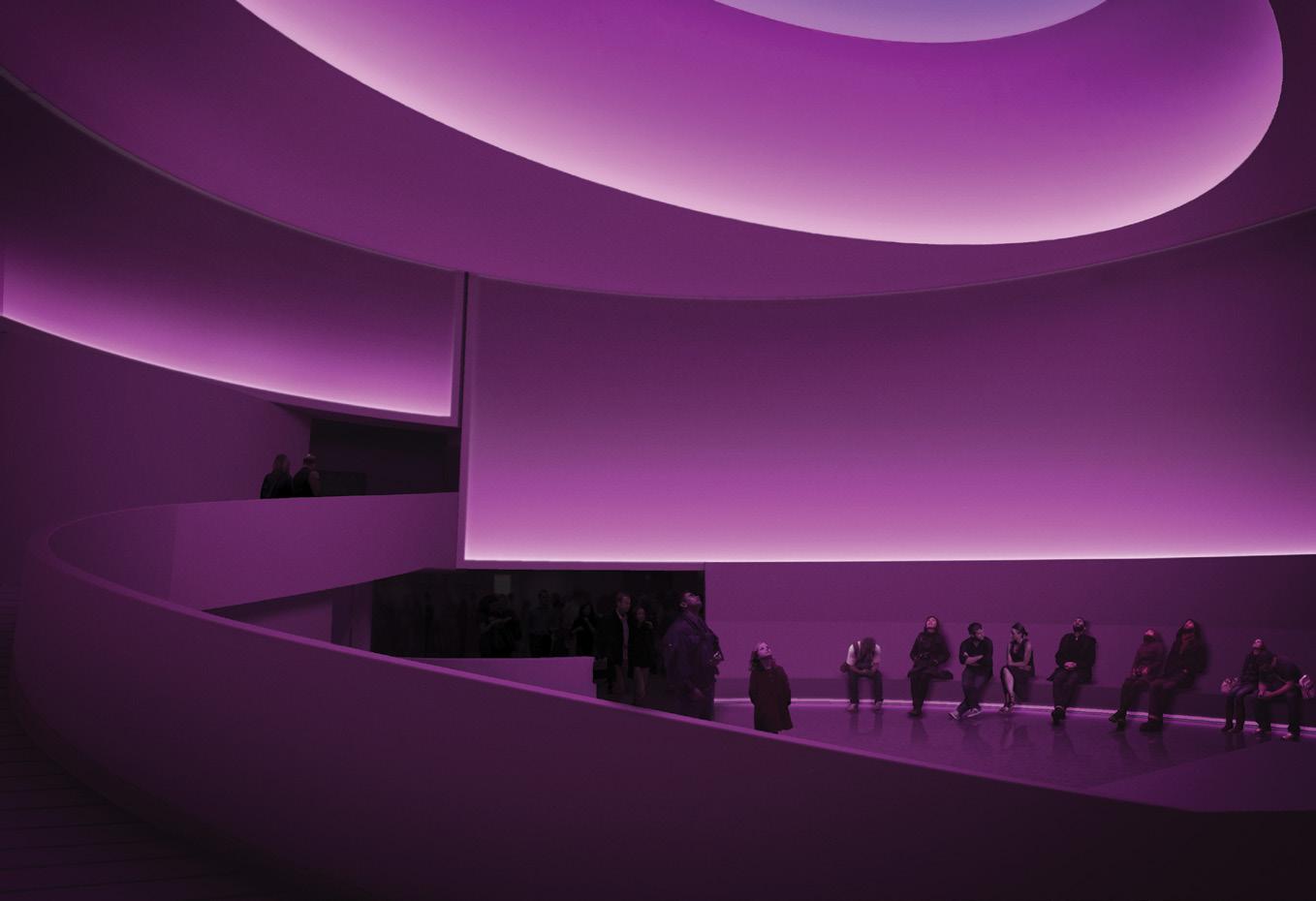
The rotunda of New York’s Guggenheim Museum lit by James Turrell
Danish-Icelandic artist, Olafur Eliasson worked similar alchemy in Denmark’s second city of Aarhus where Aros Museum visitors can walk through his magical glass corridor in the sky, Your Rainbow Panorama, tinted in the colour spectrum. His waterfall cascading from midair at Versailles and his ‘green rivers’, tinted with fluorescent dye (eco-friendly and with prior permission) are all part of his fascination with light and colour.
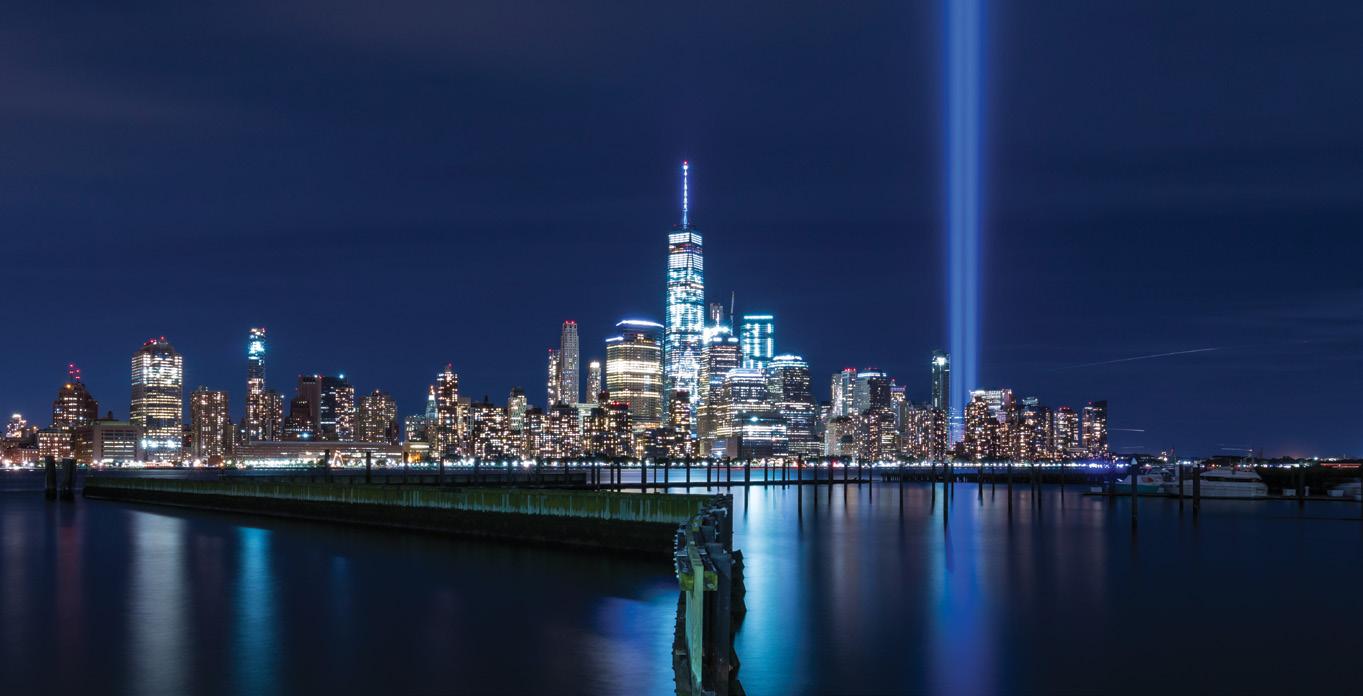
Tribute in Lights, New York
Tribute in Lights is the world’s most recognisable installation you can only see once a year: two vertical beams shooting into the sky six blocks from New York’s Ground Zero, where the Twin Towers stood before 9/11. The collective work of New York’s Municipal Arts Society, they light up on that fateful anniversary from dusk to dawn and can be seen from 60 miles away.
Despite the expanding constellation of light artists, there’s only one museum in the world dedicated to their work: the Centre for International Light Art in Unna, Germany. The former brewery’s 52-metre chimney lights up in numbers called the Fibonacci sequence – the mathematical formula for growth patterns in life forms related to the Golden Ratio, every artist’s Holy Grail.
LIGHT PAINTING
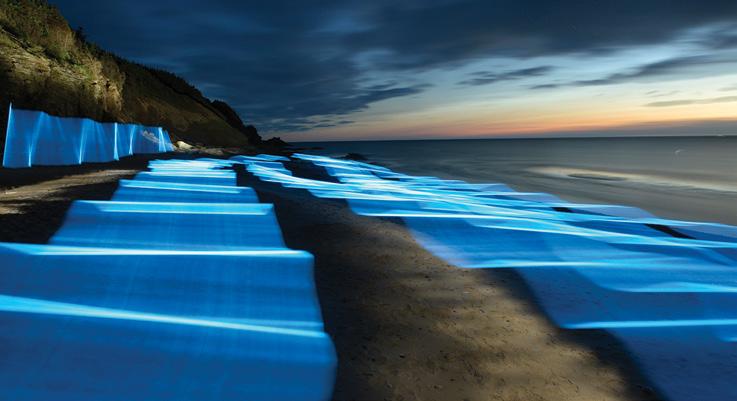
Banks Road Blue by Vicki DaSilva
It seems space age but this photographic technique has been evolving since Picasso played around with a penlight in front of a camera for LIFE magazine in 1949.
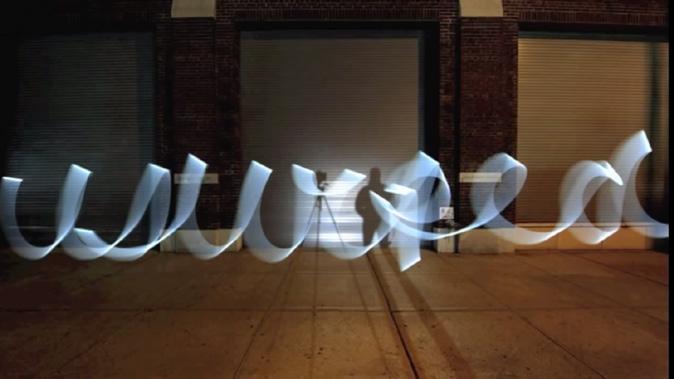
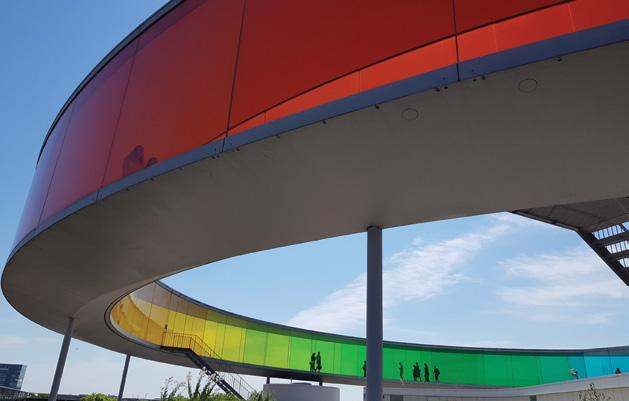
Your Rainbow Panorama, Olafur Eliasson © Beg00d / Shutterstock.com
Photography is Latin for ‘writing with light’ but Picasso’s scribbles seem basic now, compared to the grand opuses being created with portable LEDs, tripods, smart cameras and long exposures at dead of night. Light painting practitioners dress in black to appear invisible in the picture (or not, if they want to be seen) and work with torches, lamps and Jedi Knight light sabres which they flash and twirl in front of the camera to surreal effect.
American landscape light painter Vicki DaSilva works with eight-foot long fluorescent lamps moved by pulleys and single frame time-lapse to paint ethereal waves of colour on beaches and throw down tartan blankets of light over hillsides. Her how-to videos on YouTube have won her millions of fans.
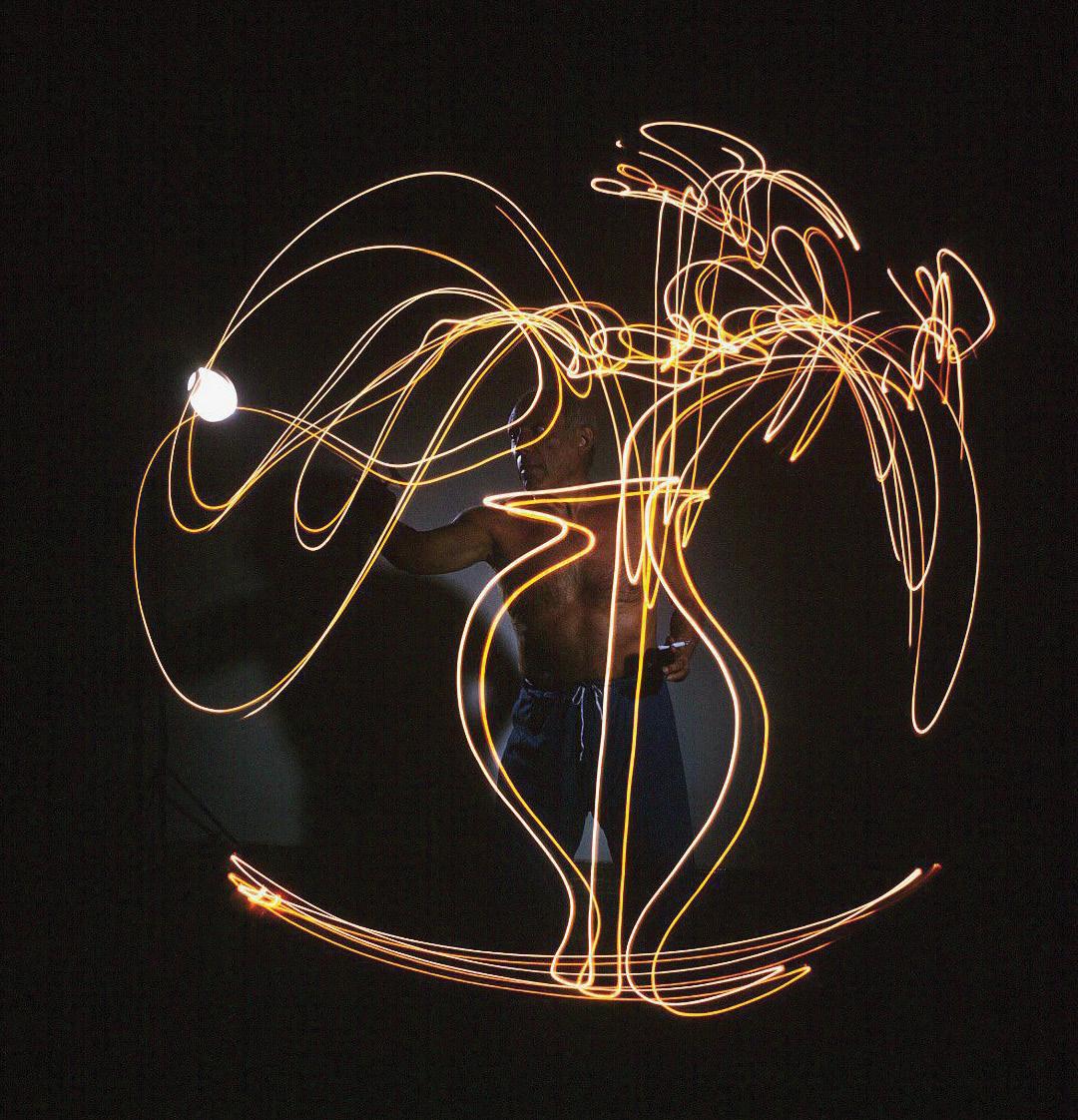
Picasso light painting © LIFE magazine, Gijon Mili
It’s quite a performance but nothing compared to the lengths taken by German photographer JanLeonardo Wöllert. The founder of Light Art Performance Photography (LAPP) choreographs and rehearses every shoot, travelling to remote locations like the top of the Matterhorn for his backgrounds. His scifi concepts have won him contracts with Nike, the Tokyo Motor Show, Canon and Coldplay. “I love to work with old, broken and lost places… to think my light art breathes life back into the area,” he says. “It’s a mixture of creativity, fantasy and a little bit of madness.”
LIVING LIGHT ART
It doesn’t sound like a best-seller at the moment but art created with bioluminescent bacteria could be the next big thing. American geneticist Hunter Cole is one of the pioneers of this weird art-meets science where agar dishes are ‘painted’ with a solution of glow-in-the-dark microbes, trawled from the darkest depths of the ocean, and photographed – a kind of invisible ink which vanishes in daylight. Very Harry Potter.
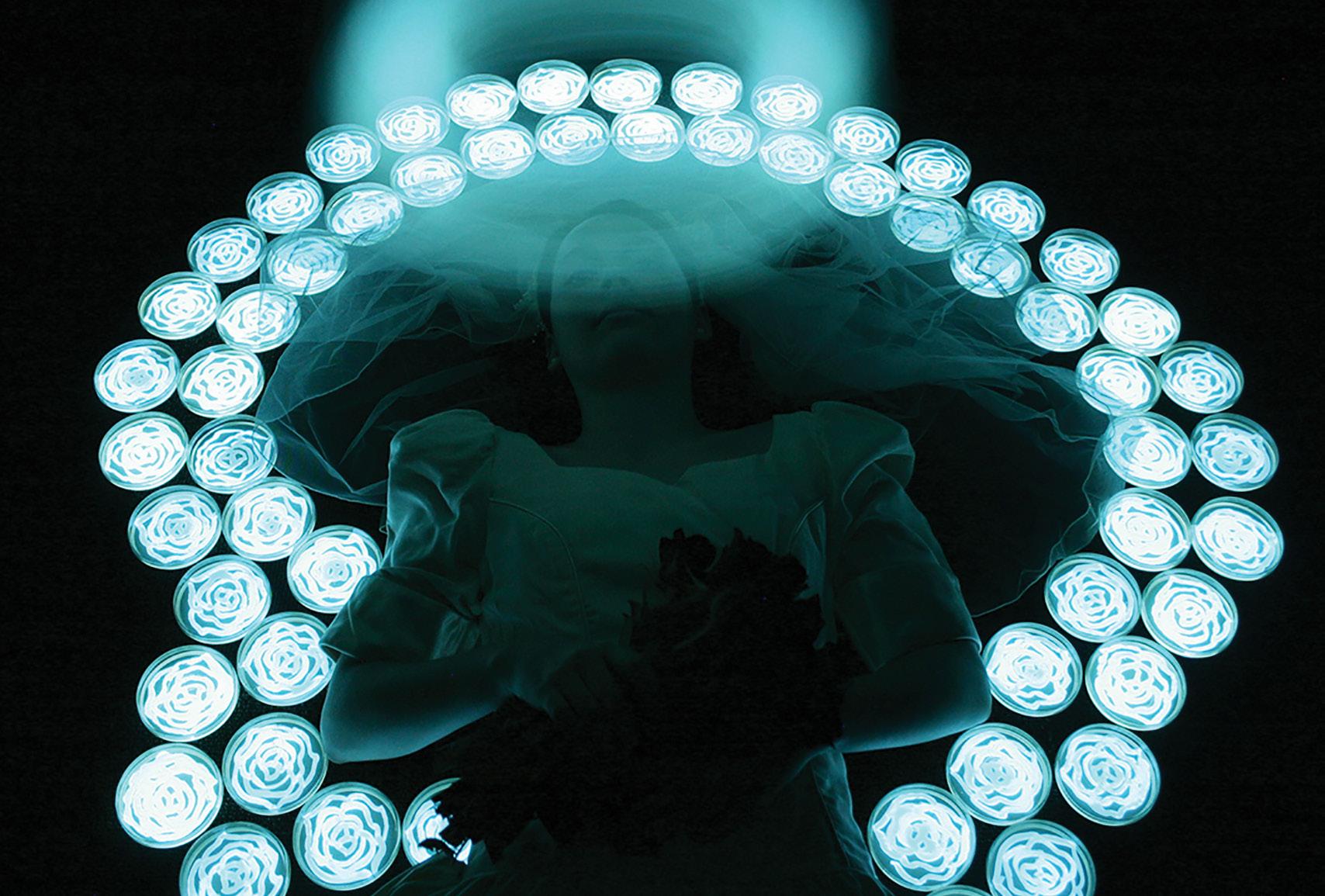
Angel Bride by Hunter Cole, created with bioluminescent bacteria
LIGHT ENTERTAINMENT
Light festivals are tourism’s latest brilliant idea for brightening up dark winter nights and keeping visitors coming in low season. Let’s hope we get to see some in 2020!
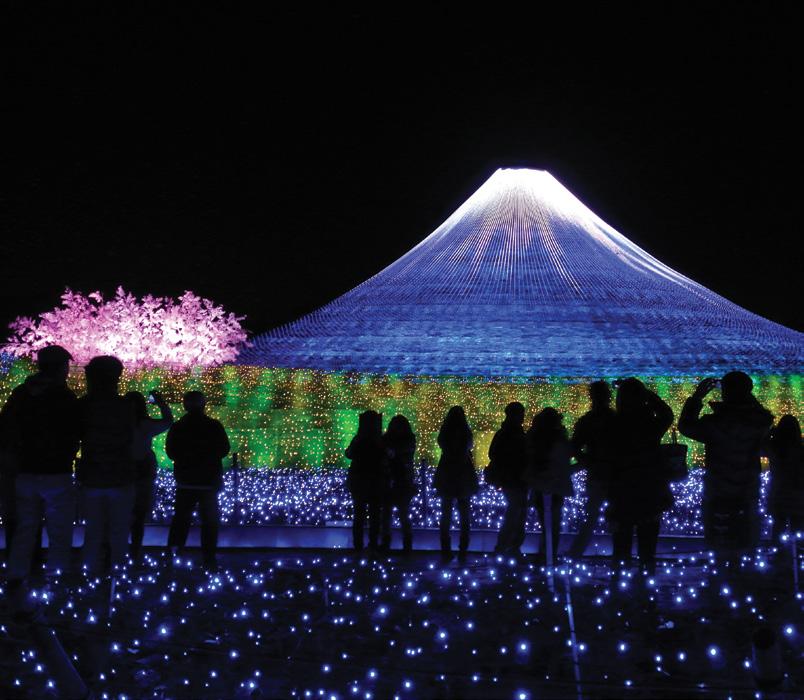
Nabana no Sato, Japan
Vivid Sydney puts the city’s iconic architecture under the spotlight for three weeks during the Australian winter (May/June), though sadly not this year due to Covid-19. Amsterdam’s Light Festival is a highlight over Christmas with millions of lights strung along canals and bridges. The reflected light in the water amps up the impact. In scale and spectacle, few festivals outshine Japan’s Nabana no Sato which lights up the eponymous Botanical Gardens in Kuwana City from October to May. Fairytale scenes of cherry blossom, paddy fields and Mount Fuji are connected by tunnels of light recreated in eight million petal-shaped LEDs powered by solar energy. On a clear night their glow can be seen from space.
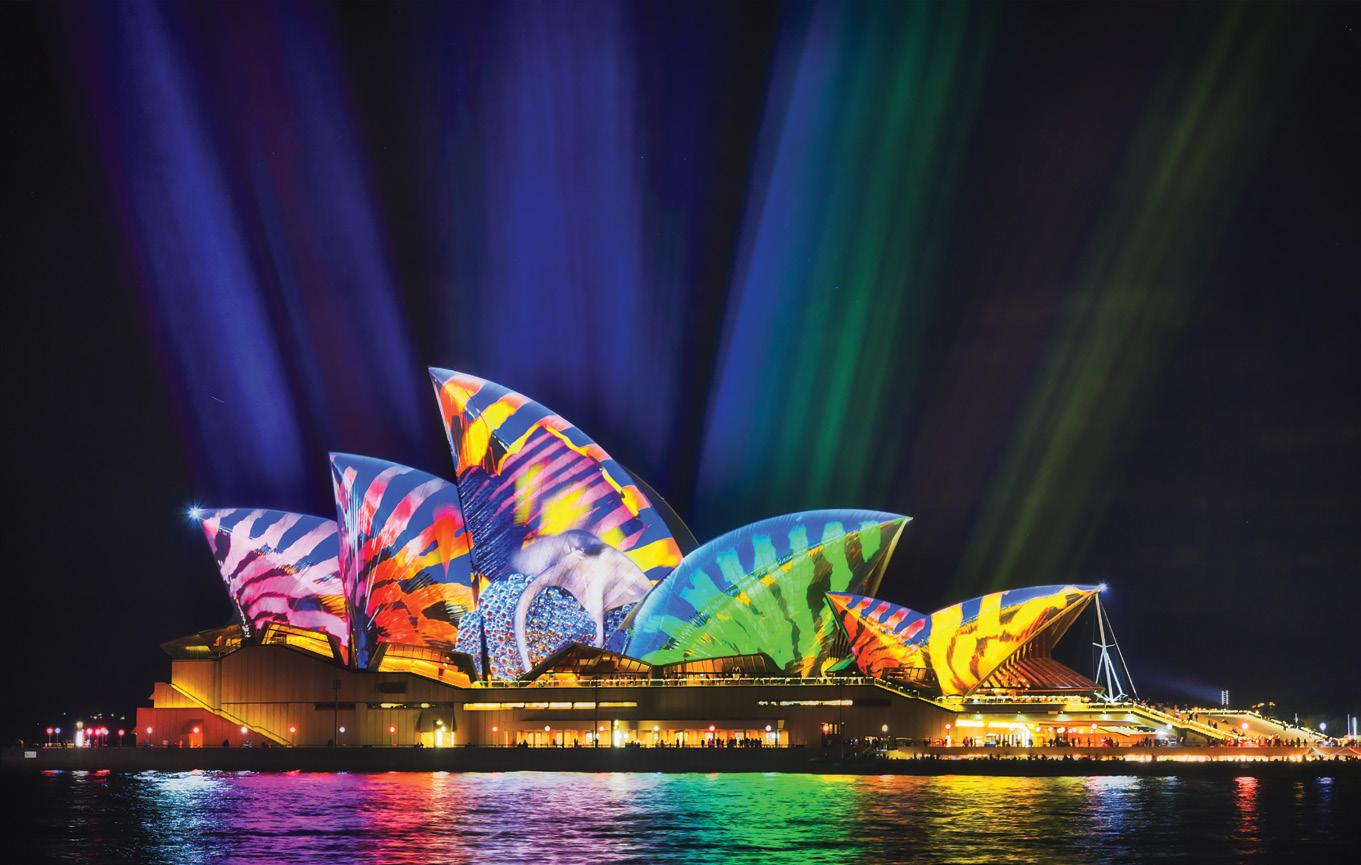
Sydney Opera House










